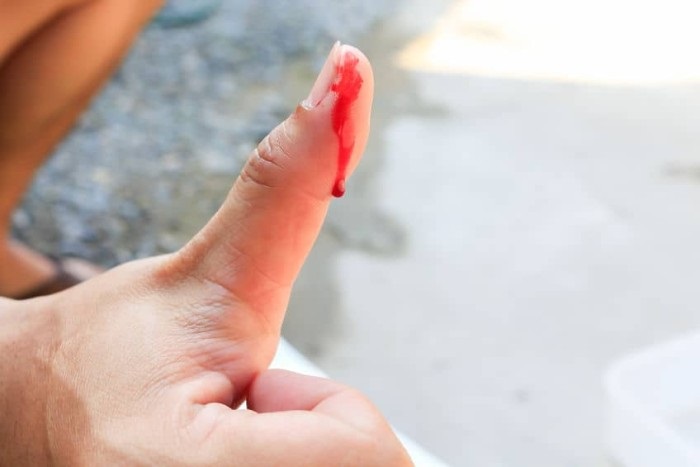Unveiling Hemophobia: Understanding the Causes and Strategies for Prevention

Introduction:
Hemophobia, also known as blood phobia, is a specific phobia characterized by an intense and irrational fear of blood. This condition can elicit severe anxiety and physical reactions in individuals when faced with situations involving blood or blood-related stimuli. In this extensive exploration, we delve into the nuances of hemophobia, exploring its causes, manifestations, and providing a detailed guide on strategies for prevention and coping.
Defining Hemophobia:
- Nature of Hemophobia: Hemophobia falls under the category of specific phobias, which are characterized by an extreme and disproportionate fear of a specific object or situation. In this case, the fear centers around blood or anything associated with it.
- Common Triggers: Individuals with hemophobia may experience anxiety or panic attacks when exposed to blood, medical procedures, or even visual representations of blood in movies or images. The triggers can vary in intensity, ranging from mild discomfort to severe panic reactions.
Causes of Hemophobia:
- Traumatic Experiences: Traumatic experiences involving blood, such as witnessing a severe injury or undergoing a traumatic medical procedure, can contribute to the development of hemophobia. These experiences create lasting imprints on the individual’s psyche, leading to an irrational fear response.
- Learned Behavior: Hemophobia can be learned through observation or association. If an individual witnesses someone close to them displaying extreme fear or distress in response to blood, they may internalize that fear and develop hemophobia themselves.
- Genetic Predisposition: There is evidence to suggest a genetic component in the development of specific phobias, including hemophobia. A family history of anxiety disorders or specific phobias may increase an individual’s susceptibility to developing hemophobia.
- Evolutionary Factors: Some researchers propose that the fear of blood may have evolutionary roots as a survival mechanism. Avoidance of blood and injury could have provided an adaptive advantage in avoiding potential dangers or contaminants.
Manifestations of Hemophobia:
- Physical Symptoms: Individuals with hemophobia may experience a range of physical symptoms in response to blood-related stimuli. These can include increased heart rate, rapid breathing, dizziness, nausea, sweating, and, in severe cases, fainting.
- Psychological Impact: Hemophobia can have significant psychological consequences, leading to heightened anxiety, panic attacks, and avoidance behaviors. The fear may extend beyond real-life situations to the anticipation of encountering blood, impacting the individual’s daily life.
Prevention and Coping Strategies:
- Gradual Exposure Therapy: Gradual exposure therapy, a common approach in treating phobias, involves systematic and controlled exposure to the feared stimulus. Under the guidance of a mental health professional, individuals gradually confront blood-related situations to desensitize their fear response.
- Cognitive Behavioral Therapy (CBT): CBT is a therapeutic approach that addresses the irrational thoughts and beliefs associated with phobias. By challenging and restructuring negative thought patterns, individuals can develop healthier coping mechanisms and responses to blood-related stimuli.
- Mindfulness and Relaxation Techniques: Incorporating mindfulness and relaxation techniques, such as deep breathing exercises or meditation, can help individuals manage anxiety and physiological responses when confronted with blood-related situations.
- Education and Understanding: Knowledge about the nature of hemophobia and its causes can empower individuals to confront and challenge their fears. Understanding that hemophobia is a treatable condition and not an inherent characteristic can reduce feelings of helplessness.
- Support Networks: Seeking support from friends, family, or support groups can provide individuals with hemophobia a safe space to share their experiences and receive encouragement. Knowing that they are not alone in their struggles can be reassuring.
- Professional Intervention: Consulting with mental health professionals, such as psychologists or therapists specializing in phobias, can provide targeted and personalized interventions. Professionals can guide individuals through evidence-based therapies and coping strategies.
Conclusion:
Hemophobia, though challenging, is a treatable condition that individuals can overcome with the right support and interventions. By understanding the causes, manifestations, and implementing prevention and coping strategies, individuals can reclaim control over their reactions to blood-related stimuli. Seeking professional guidance, cultivating a supportive network, and embracing gradual exposure techniques are essential steps towards managing and, ultimately, overcoming hemophobia. Remember, the journey to overcoming a specific phobia is unique to each individual, and with the right resources and strategies, individuals can navigate towards a life where encounters with blood no longer evoke overwhelming fear and distress.




